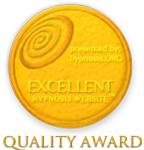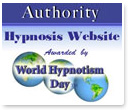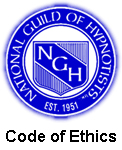
by Charles Curtis
As many clients do, this woman asked me to help her acquire a “better memory”. She said she was terrible at dates and times, and had a miserable time with tests. She was very unhappy about this, and dreaded the process of remembering things. She “knew” she would fail, for she had done so many times.
I took a history, and while doing that, I assessed her mental strategy for memories. As we are taught to do in NLP, I looked “under the hood” and found several interesting things when poking around for the mechanical details of how she remembered:
-
Contrary to her belief that her memory was “terrible”, she remembered painful events quite well, in full vivid color. These memories were “in her face”, up close and personal, and linked to a strong feeling of suffering. In fact, one of her biggest problems turned out to be that she couldn’t forget these painful events, she remembered them too well!
-
She had vivid memories of not remembering something important, resulting in unpleasant consequences. These memories of days gone haywire were etched in stone, and had become defining moments for her, around which her negative self-concept of life revolved.
-
Her memories of dates and times, in comparison, were very fuzzy and indistinct. She had trouble recalling them, and when asked to do so would go through a series of logical questions in her head, which would almost but not quite recall the “lost” memory. This would link, through stimulus response, to a somatic sense in the body of fear of a negative consequence, and start to bring up those well-remembered painful memories of “forgetting” from the past, and her body would become tense and she would now experience becoming anxious. She was so good at this that it only took her a split second to do all of this.
IT’S ONLY A MENTAL STRATEGY
People think they are permanently damaged or defective, when it’s only a mental strategy, a bad habit of thinking, plus a couple of firmly implanted anchors of traumatic memories, all of which together are keeping them in bondage.
So she was quite relieved, when I told her she was having trouble with dates and times, not because she was a defective person, but because her strategy for remembering was ineffective. If she learned a better way of remembering, which I assured her I had showed many others how to do, she would find dates and times being recalled effortlessly, and her whole experience of memory would change into a positive and pleasurable experience.
I also told her the past pain from those times when she had forgotten and there was a negative consequence was still active in her consciousness, preventing her from having peace of mind. I said those old memories were conditioning her to be even less effective in her remembering, and that if she let me help her to reduce the mental pain around those memories, which is something I had done for many people, she would feel much better and enjoy life much more.
GETTING RID OF THE EMOTIONAL CHARGE
-
EFT works so well I use it with every client as my first thing. So I had her tap on the strongest memories of not remembering and having a negative consequence.
-
After tapping on several of these strongest memories, her body was noticeably more relaxed and she felt more positive about herself. The EFT took about five minutes in total.
-
As a test to see if we were done, I had her now affirm, while doing EFT, “I am learning a new way of remembering that is so much fun I will smile while I am doing it.” She was able to do this with congruence, and smiling at the possibility of this as she tapped, showing that the emotional charge of her old memories had been neutralized.
PRACTICING A NEW STRATEGY FOR TIMES AND DATES
-
I then had the client tell me of a date and a time in the future that she wanted to remember. It was of an interview in the future that she wanted to make sure she was ready for.
-
She was predominantly visual, so I had her remember what her personal calendar looked like. In her mind’s eye, I had her locate the month, the week, and the day on that calendar. She was able to do that. With her eyes closed, I had her mentally write in the event and the time on that day. She was able to do that.
-
Then I had her close her eyes and tell me how many weeks that was from today, what day of the week it was, and what time it was on that day. She was able to do that.
-
I had her locate a memory in the past when she was successfully at an event similar to the one she wanted to remember, and on time. She told me the memory was in color, like a panorama, it was like she was “there”. She had been parked in her car, seeing the scene through the windshield.
-
I had her think of being at this future event, in her car, seeing through the windshield, from the parking lot. She was able to do that.
-
I said, “How do you know you’re on time?” She said she would look at her watch. In her mind’s eye I had her check her wristwatch and notice that it was 10 minutes before the event.
-
Now I had her look backwards in time and asked her “How long was the trip?” “An hour.” I said, “So where were you an hour ago?” “At home.” “What were you doing just before you left?” “Tidying up the kitchen after breakfast.”
-
I had her transport herself mentally to her kitchen and see herself tidying up and tell me what was going on. She told me of putting the breakfast things away, wiping off the table, and washing the dishes.
-
I asked her, “What time do you have to leave to get to your appointment on time?” She told me the time. I said, “How do you know when it’s that time?” She said she checked the clock in her kitchen. I asked her, “What time does that clock say when you have to leave?” She told me.
-
I said, “When do you have to start breakfast so that you can get to this event on time?” She told me. I asked “What are you doing before breakfast?” She said “Reading the newspaper”. I said, “How do you make sure that you stop reading the newspaper in time to finish breakfast so that you get to your appointment on time?” She said “I look up from the paper and check the time on the kitchen clock.”
-
I now had her retell me the whole narrative, from it becoming that week, then that day, on her calendar, then in first person fully associated into her body, visualize that she is sitting reading her paper, looking up at the kitchen clock, realizing she has to eat now, eating and cleaning up with an eye on the clock, and leaving with plenty of time, driving in a relaxed fashion to the event, and arriving in plenty of time, checking her watch as she looks through the windshield, and realizing she is there with time to spare.
-
I then had her compare that memory, which was etched in mind like a laser-sharp painting, and compare that to other times when she had tried to remember a time and a date. She quickly realized that the process I had taken her through was radically different than what she normally did when trying to remember a date and time.
-
I pointed out that if she did this every time, it would seem like she had a photographic memory with respect to times and dates, and that she would seem so good at this, that she would wonder how she had ever had a problem with dates and times in the past.
DIFFICULTY WITH TESTS
-
We then tackled her difficulty in studying for tests. I had her tell me of a concept she had trouble with. It was remembering some rules and regulations for a test, which seemed to her dry and boring, and which her mind mentally resisted studying.
-
I had her take one of the rules. Knowing she had a visual representational strategy, I had her pretend to mentally be in that situation. I had her look around in that situation and figure out for herself why that rule was in place. She quickly realized that it was for safety.
-
I then had her see someone else as if from a distance, as if they were on a TV screen, not following the rule and having something bad happen as a result. Then I had her visualize herself in that situation, up close and personal, as large as real life, following the rule and being safe.
-
I first of all had her watch herself in that situation following the rule and being safe. Then I had her go into her body and actually “be” in that situation mentally, following the rule and being safe.
-
Now I asked her to tell me what the rule was. She had no difficulty telling me the rule, why it existed, and the details of following it safely, which would enable her to pass a test question about it immediately and correctly.
-
I then pointed out that if she did that about every rule she had to learn, that not only would the process of learning become interesting and fun, but that when the test rolled around, she would be spectacularly successful, and that it would seem like she had a photographic memory when it came to those rules and regulations.
FOLLOWING THE NLP WITH HYPNOSIS
-
As I always do at the end of a session, I then did hypnosis with her to give her the direct suggestion that, from now on, her mind would automatically go through this process every time she had a date and time to remember, and that when she did this, she could not possible forget, and that the process of remembering would be so much fun she would look forward with delight to the process.
-
I then told her that any time she had a rule to learn, she would find her mind creating a mental scene in which she saw that rule being acted out in both a bad way (dissociated) and a good way (associated) and that from that time forward she would know and follow the rule perfectly at all times. And that the process of remembering rules in this way would be so much fun she would look forward with delight to the process.
-
I told her that her memory would seem photographic in nature, and it would all seem so easy, that she would wonder how she could have ever had a problem with memory in the past.
-
I ended with some general ego strengthening, telling her that her life was now so much easier than in the past, and that she found herself achieving her goals so much more easily, and having so much more fun.
-
As she came back from trance, and while she was still coming back to full awareness, I pointed out the very evident truth that she was happy, peaceful, and relaxed, smiling with anticipation at the prospect of putting into action her new memory skills, that her body was very physically relaxed, her mind was at peace, and she felt very joyful.
CONCLUSION
Assuming we’re getting enough sleep, eating right, and moving our bodies healthfully, mental problems like “bad memory” are usually due to bad habits of thinking, coupled with traumatic memories of problems caused by not remembering.
This is good news. When we learn to use our marvelous memories in the way they were intended to be used, all of a sudden our memories improve tremendously, and the process of remembering is so much fun that the subconscious mind looks forward to the experience, becoming as spectacularly good at remembering, as it used to be at not remembering.
This is the kind of NLP/hypnosis that makes it all worthwhile, for when you do something like this for your clients, it’s like you’ve given them their life back.






